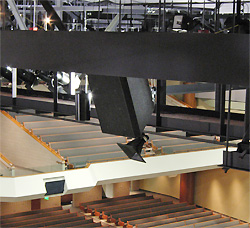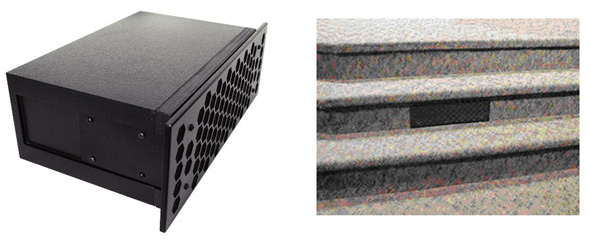
Base Design Considerations
As most of us are well aware, in live audio there are often consequences as well as the anticipated benefits to what we do and how we do it. It can safely be said that “nothing is as simple as it appears,” and fill loudspeaker design is no exception.
Perusing what is available as far as small-profile full-range fill loudspeakers clearly shows that dual woofers with a single high frequency element is the most widely used driver configuration for front fill, underbalcony fill, box seat fill, and so on.
This is necessary because a single small cone driver cannot keep up with a horn-loaded high-frequency device and will simply ‘run out of gas’ when pushed to the levels that are needed.
Two woofers couple at lower frequencies and produce more acoustic output. But how these woofers and the HF element are arranged, as well as how the two woofers are processed, have considerable impact on how these loudspeakers behave.
There are two choices for positioning the woofers: together with the HF element at one end or apart with the HF element in-between. In the hi-fi and home theater world, the latter is called MTM (mid-treble-mid) or the D’Apollito configuration. Logically, then, we will call the first configuration MMT (mid-mid-treble).
The MMT configuration results in less comb filtering from the two woofers because they are closer together. But the coverage across the horizontal axis (when these boxes are on their sides) will be uneven and asymmetrical.

On the other hand, MTM provides symmetrical coverage across the horizontal axis, but also exhibits greater comb filtering. It’s possible to reduce the comb filtering simply by rolling off (with a low-pass filter) one of the two cone drivers so that they’re allowed to couple at low frequencies but do not destructively interfere (with one another and the HF device) at (and near) the crossover point.
There are quite a few of the full-range loudspeakers on the market where the coverage of the horn is not “axi-symmetric” (a.k.a., non-conical), and with HF horns that may be rotated to suit the orientation (application) of the device. But rotating the horn also alters lobing between (and coverage from) the LF and HF elements – and this may not be to our benefit.
A small number of these loudspeakers are provided with a passive compensating network which may be engaged for each of the two horn orientations. Warning: read the spec sheets (before buying) and always check the horn orientation.
